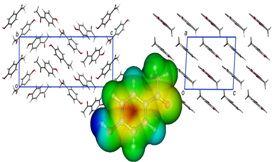RELEASE NOTES AND BUG FIXES
** VERSION 3.1.1 **
(22 Jun 2023)
Release Notes
Ability to create polymeric chains.
Support for Coarse-Grained models, like the Martini force field (Beta release for GROMACS users).
Bug fixes.
** VERSION 3.0.5 **
(17 Mar 2022)
Release Notes
Updated user manual.
The Drude spring constant, k, is now defined following the conventional harmonic oscillator equation (i.e., k/2).
Fixed problem when LAMMPS input files are prepared using simulation boxes containing TIP4P water molecules, previously equilibrated with DL_POLY and GROMACS.
Fixed problem when the same molecule is used more than once in the same topology file of GROMACS
Other minor fixes and warnings messages improved.
** VERSION 3.0 **
(17 Dec 2021)
Release Notes
Native routines to support the creation of input files for DL_POLY, LAMMPS, CHARMM, and GROMACS.
Support for polarizable force fields based on the classical Drude oscillator model for all MD packages.
Support for Thole screening functions (except for DL_POLY).
New setup of water tip4p models in GEN files.
Improved setup of supplemental bonds and constraints in the GEN file.
Support for constraining options using PACKMOL.
Use of wildcards to define dihedral angles.
Ability to handle molecules containing up to 9999999 atoms.
Improved error messages.
Different 1-4 scaling factors can now be set in the library files.
New connectivity recognition scheme to allow the identification of intermolecular bonds for both organic, inorganic, and organometallic molecules.
New routine to check for the existence of superimposed atoms.
Support for n-m van der Waals potential functions.
Bug Fixes
-
Minor bugs corrected.
** VERSION 2.1.0 **
(28 July 2017)
Release Notes
An interface between DLPGEN and ForConX has been included in the code. This new feature allows the creation of input files for LAMMPS, CHARMM and AMBER.
-
New internal checks have been included in the code. For example, the program is now able to check the total charge of the system and gives warnings if the results are different from zero.
Bug Fixes
-
Minor bugs fixed.
** VERSION 2.0.2 **
(15 December 2016)
Release Notes
-
IF functions can now be used in the GEN files to customize options for GROMACS or DLPOLY input files. Similarly, IF functions can now be set to read/ignore polarizable parametrizations and symmetry operations.
Bug Fixes
- Corrected bug that led to a program error when the "-14excl" argument was used.
- Corrected bug when a REVCON file was used.
** VERSION 2.0.1 **
(12 October 2016)
Release Notes
-
In GROMACS input files, the improper dihedrals are now set as function 4 instead of 5 (see Gromacs manual for more details). This modification only modifies the data printed in the *log files, where a new entry for improper dihedral energy is added.
-
A new Force field consistency check was implemented.
Bug Fixes
- Fixed issue related with 1-4 interactions in the GROMACS input files.
** VERSION 2.0.0 **
(31 August 2016)
Release Notes
-
GROMACS input files can now be directly generated using DLPGEN. The program generates the files "molecular.itp" (that include all force field informations), "topology.top" and (as before), a "CONFIG.pdb" containing the system initial conformation (PACKMOL can still be called). These files can then be directly used to run "grompp". In principal, most of the options available for DLPOLY can be used to generate the GROMACS files (including the use of modified LJ parametrizations - see Version 1.0.1:Rev.007).
-
Support for "COS4" dihedral functions.
-
Revision and update of the available input files for DLPGEN.
Bug Fixes
- Some error reports were improved.
- Fixed issues related with reading of input files.
- Minor issues have been fixed.
** VERSION 1.0.1 **
(5 February 2016)
Release Notes
-
The mixing rules for the Lennard-Jones (LJ) parameters can now be specified by the user. This can be performed in two ways: (a) The LJ parameters for a specific pair can be directly indicated; (b) by changing the mixing rules. If we consider atoms a and b, we have that (e.g.): σab = (σa * σb) / n and εab = (εa * εb) ^ (1 / n). By default n = 2, but this value can be changed for all mixing rules involving a specific atom.
- A verbose mode was included to help addressing errors while running the program.
- Update of the program manual.
Bug Fixes
- A bug in the force field file error report was corrected.
- A problem in the analysis of bonds containing bromine atoms was corrected.
